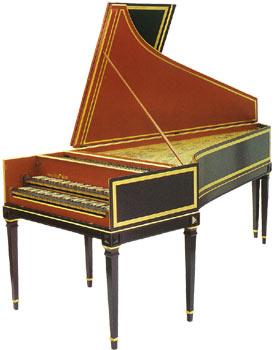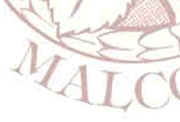

For detailed view click here
Pierre Donzelague was born at Aix-en-Provence in about 1670, the son of an instrument maker. As a young man he moved to Lyons, where he gained a widespread reputation both as a harpsichord maker and as a practising musician.
The 1711 is among the earliest five-octave French instruments, and shows that this style of harpsichord making had already reached full maturity by this early date. The instrument is privately owned in London.
The sound is more disciplined than tends to be the case with late makers such as Taskin. The narrowness of the tail area avoids an overbearing bass, and the predominant characteristics are clarity and quick-spokenness
|
CASE |
of poplar with solid bentside and dovetailed joints. Internal framing of spruce |
|
SOUNDBOARD |
of spruce, bridges of pear. Original scaling 366mm (8'), 179mm (4'). |
|
ROSE |
cast and gilded.
|
|
KEYS |
of basswood; naturals of ebony with arcaded fronts; sharps of pear and bone. . |
|
JACKS |
of pear and holly with bristle springs |
|
FINISH |
hand painted and burnished. Case and lid panelled with gold leaf, and all mouldings also gilded. |
|
DISPOSITION |
two registers at 8', one at 4'; buff to either 8'; shift coupler. |
|
PITCH |
a' = 415Hz, with transposition to A440. Additional transposition down to A392 is also available. |
|
COMPASS |
FF to f ''' (61 notes). |
|
DIMENSIONS |
|
length |
2377mm (93.6"); |
|
width |
92lmm (36.25"); |
|
height |
276mm (10.9"). |
|
|
|
STANDS |
the stand shown, with square tapering legs highlighted with gilding, has a timeless elegance. Also characteristic for this period are square legs connected by a stretcher just above floor level, with bun feet. Cabriole stands, though fashionable at a slightly later date, are an appropriate alternative. We are pleased to discuss any special requirements. |





